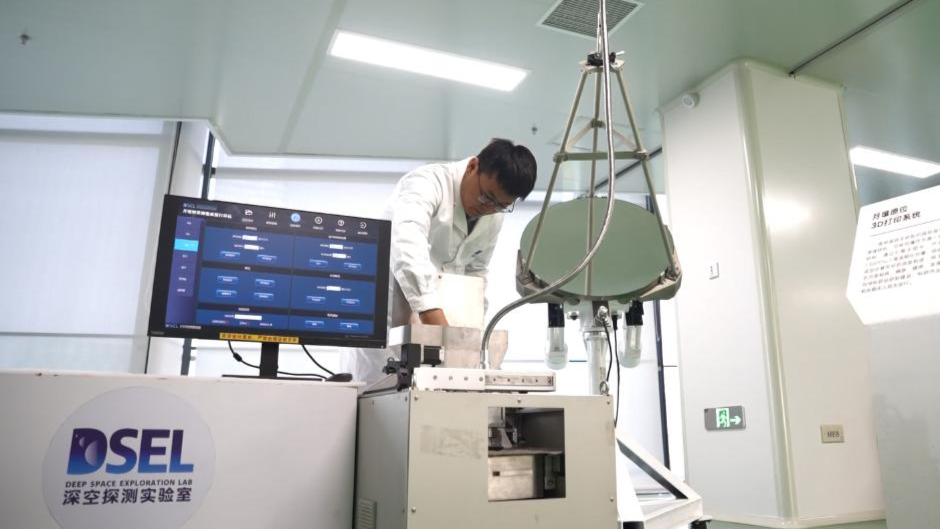
HEFEI - A groundbreaking 3D printing system developed by Chinese scientists has explored using only on-site-sourced lunar soil to build habitats, paving the way for the large-scale, on-site construction of lunar research stations.
The Deep Space Exploration Laboratory in Hefei, Anhui province, has successfully prototyped a lunar regolith 3D printer that eliminates the need for Earth-sourced construction materials, according to Yang Honglun, a senior engineer at the lab.
He revealed that the system uses a high-precision reflective concentrator and flexible fiber-optic energy transmission to achieve temperatures hot enough to fuse lunar regolith.
READ MORE: Construction plan unveiled for global lunar research station
"This printing breakthrough has validated the feasibility of using lunar soil as the sole raw building material, enabling true in-situ resource utilization and eliminating the need to transport any additional materials from Earth," he said.
Also among the printing system's key innovations is flexible manufacturing, which enables brick production and the customized molding of complex structures.
A preliminary test of the prototype's lunar regolith forming process has been completed on the ground surface. Tests of its ability to melt and form lines, surfaces, bodies and complex structures have also been completed, and tests of the technical feasibility of the prototype's solar concentrating technology, optical fiber bundle energy transmission and lunar regolith melting system have been systematically completed.
In the early stages of the research team's work, the core challenge was achieving reliable solar energy concentration and regolith shaping under the extreme conditions of the lunar environment.
After extensive testing, the multidisciplinary team -- spanning the fields of planetary science, materials science, mechanical engineering, energy dynamics, thermal physics and optics -- solved critical problems in energy capture, transmission and molding.
As for future applications, Yang said the prototype could manufacture lunar regolith structures, supporting the construction of lunar roads, equipment platforms and buildings, and enabling large-scale, sustainable lunar exploration and resource utilization.
It also validates key technologies for lunar energy capture and material extraction, laying the technical foundations for the construction of lunar energy systems.
The lab - also known as Tiandu, named after one of the three main peaks of the province's Yellow Mountain - is a national-level scientific research platform built by the China National Space Administration (CNSA), the Anhui provincial government, and the University of Science and Technology of China.
READ MORE: China launches Chang'e-5 to collect, return moon samples
It is a new model for China's deep-space research and operates with corporate-like autonomy in research direction, fund usage, talent and salary management, according to Li Hang, head of the lab's board office.
Since its official launch in June 2022, Tiandu has provided robust support for the successful implementation of major projects such as the Queqiao-2 relay satellite and the Chang'e-6 lunar mission, which returned humanity's first-ever sample from the far side of the moon.
Looking ahead, the lab is developing the world's first Mars sample research facility and is inviting collaboration. "We welcome scientists from home and abroad to conduct research in Hefei," Li said.


